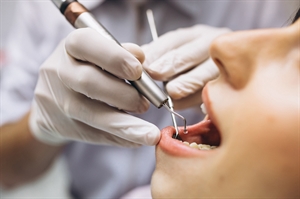All Categories
Featured
Table of Contents
In 11793, Quinn Hamilton and Jaylyn Newman Learned About Frederick Md Events Next 3 Days
Why Is Dental Care Important? What is preventive dental care and how does it differ from routine cleaning? While both practices can help to keep your teeth and gums in good health, they have distinct purposes. Brushing, flossing are all basic dental hygiene that one must practice on a regular basis. One needs to ensure that all the elements of basic dentistry are practiced to ensure that quality oral health is achieved. This is also necessary to prevent cavities and to maintain oral hygiene. It is also essential to remove plaque, dead cells and bacteria from the teeth. There are many dental products available today to accomplish these functions and at the same time provide a healthy smile to the individual. It is important to remember that some dental procedures may be necessary to treat a cavity or disease. The procedure is known as an orthodontic procedure and a crown is typically placed on the tooth to support the tooth. Crowns may also be used to protect a tooth from infection. There are other types of problems as well such as tooth decay and gum disease. Gum disease can result in gingivitis. If you have gingivitis and you neglect your teeth, it can cause gum disease. It is important to see your dentist on a regular basis for these types of problems. Periodontal disease is caused when bacteria grow in the pockets in between the teeth. An infection can travel to bone and cause serious and permanent damage to the bone. Periodontal diseases can be very painful and require root canal treatment. If the patient is in pain or is uncomfortable during the cleaning process, the dentist's office will ask the patient to bring their toothbrush and floss along and wear them throughout the visit. As the dentist cleans the teeth, a mirror is used to check for signs of infection and cavities. If no problems are found, the dentist will then give the patient a mouthwash. You should always remember that oral health is very important. You want your mouth to be free of bacteria and other things that can cause infections. You should always brush, floss and use a fluoride mouthwash to keep your mouth healthy. When it comes to oral health, everyone wants to keep their teeth as white as possible. You never know what can go into your mouth and what can happen to your teeth. Some dentists offer dental health care as part of their overall practice. You can select a dentist that is able to offer the comprehensive treatment that is required for your specific problem. Before you make your decision, ask your dentist about your oral health history and any symptoms that you may have. Bacteria can build up and can cause tooth decay. This will lead to gum disease, if your dentist does not remove the bacteria from the teeth. If you do not brush your teeth often enough or do not brush at all, your teeth can get covered with bacteria. Periodontal disease can also be a result of tooth decay. This type of disease causes periodontal pockets, which are pockets in the gums and teeth where bacteria and other things can form. If the bacteria and other organisms are not removed, the pockets can fill up and cause the gums to weaken. Dental clinics use a variety of different methods to treat these problems. Most clinics offer dental procedures, including cleaning, scaling and filling. You will probably have your teeth cleaned by a professional dentist to remove the bacteria and plaque from the teeth. Tooth grinding, which is a common cause of cavities, may require root canal treatment. You will need to visit a dentist to determine what steps need to be taken to prevent tooth loss. If tooth grinding is a result of tooth decay, your dentist may prescribe antibiotics and other medications to help with the problem.
City in Maryland, United StatesFrederick, MarylandCity of FrederickBridge on Carroll CreekMotto( s): "The City of Clustered Spires" Location within the State of MarylandShow map of MarylandFrederick (the United States) Program map of the United StatesCoordinates: Collaborates: United States Founded1745Government MayorMichael O'Connor (D-MD) Board of AldermenKelly Russell (D-MD) Ben MacShane (D-MD) Derek Shackleford (D-MD) Donna Kuzemchak (D-MD) Roger Wilson (D-MD) Location City24.
28 km2) Land23. 95 sq mi (62. 02 km2) Water0. 10 sq mi (0. 26 km2) Elevation302 feet (92 m) Population City65,239 Price quote 72,244 Density3,016. 95/sq mi (1,164. 84/km2) Urban141,576 (US: 230th)UTC5 (EST) Summer (DST)UTC4 (EDT) 21701-21709301, 24024-30325GNIS feature ID0584497I-70, I-270, US 15, United States 40, US 340, MD 80, MD 144, MD 355Site Frederick is a city in, and the county seat, of Frederick County, Maryland.
Frederick has long been an important crossroads, located at the crossway of a major northsouth Indian trail and eastwest paths to the Chesapeake Bay, both at Baltimore and what became Washington, D.C. and across the Appalachian mountains to the Ohio River watershed. It is a part of the Washington-Arlington-Alexandria, DC-VA-MD-WV Metropolitan Statistical Location, which becomes part of a greater Washington-Baltimore-Arlington, DC-MD-VA-WV-PA Combined Statistical Area.
Frederick is house to Frederick Municipal Airport (IATA: FDK), which accommodates general air travel, and to the county's largest employer U.S. Army's Fort Detrick bioscience/communications research installation. Located where Catoctin Mountain (the easternmost ridge of the Blue Ridge mountains) meets the rolling hills of the Piedmont region, the Frederick location became a crossroads even before European explorers and traders arrived.
This ended up being understood as the Monocacy Path and even the Great Indian Warpath, with some travelers continuing southward through the "Excellent Appalachian Valley" (Shenandoah Valley, and so on) to the western Piedmont in North Carolina, or traveling down other watersheds in Virginia towards the Chesapeake Bay, such as those of the Rappahannock, James and York Rivers.

Established before 1730, when the Indian trail ended up being a wagon road, Monocacy was abandoned prior to the American Revolutionary War, perhaps due to the river's routine flooding or hostilities predating the French and Indian War, or just Frederick's better location with simpler access to the Potomac River near its confluence with the Monocacy.
3 years previously, All Saints Church had actually been founded on a hill near a warehouse/trading post. Sources disagree as to which Frederick the town was called for, but the likeliest prospects are Frederick Calvert, 6th Baron Baltimore (among the owners of Maryland), Frederick Louis, Prince of Wales, and Frederick "The Great" of Prussia.
Frederick Town (now Frederick) was made the county seat of Frederick County. The county initially extended to the Appalachian mountains (locations more west being challenged in between the nests of Virginia and Pennsylvania till 1789). The current town's very first home was built by a young German Reformed schoolmaster from the Rhineland Palatinate named Johann Thomas Schley (passed away 1790), who led a celebration of immigrants (including his better half, Maria Von Winz) to the Maryland colony.
In 12010, Malcolm Hood and Moses Proctor Learned About Activities In Frederick Md
Schley's inhabitants likewise founded a German Reformed Church (today called Evangelical Reformed Church, and part of the UCC). Probably the oldest home still standing in Frederick today is Schifferstadt, integrated in 1756 by German inhabitant Joseph Brunner and now the Schifferstadt Architectural Museum. Schley's group was amongst the numerous Pennsylvania Dutch (ethnic Germans) (in addition to Scots-Irish and French and later Irish) who migrated south and westward in the late-18th century.
Another important route continued along the Potomac River from near Frederick, to Hagerstown, where it split. One branch crossed the Potomac River near Martinsburg, West Virginia and continued down into the Shenandoah valley. The other ongoing west to Cumberland, Maryland and ultimately crossed the Appalachian Mountains into the watershed of the Ohio River.
However, the British after the Pronouncement of 1763 limited that westward migration route up until after the American Revolutionary War. Other westward migrants continued south from Frederick to Roanoke along the Great Wagon Road, crossing the Appalachians into Kentucky and Tennessee at the Cumberland Gap near the Virginia/North Carolina border. Other German settlers in Frederick were Evangelical Lutherans, led by Rev.
They moved their objective church from Monocacy to what became a large complex a few blocks further down Church Street from the Anglicans and the German Reformed Church. Methodist missionary Robert Strawbridge accepted an invitation to preach at Frederick town in 1770, and Francis Asbury arrived two years later, both helping to found a congregation which became Calvary Methodist Church, worshiping in a log building from 1792 (although superseded by larger buildings in 1841, 1865, 1910 and 1930).
Jean DuBois was appointed in 1792, which became St. John the Evangelist Church (integrated in 1800). To manage this crossroads throughout the American Revolution, the British garrisoned a German Hessian program in the town; the war (the stone, L-shaped "Hessian Barracks" still stand). All Saints Church, erected 1813, Principal Parish Church till 1855As the county seat for Western Maryland, Frederick not just was an important market town, however likewise the seat of justice.
Important attorneys who practiced in Frederick included John Hanson, Francis Scott Key and Roger B. Taney. Church Street with All Saints and Reformed Church spires, FrederickFrederick was likewise understood during the nineteenth century for its religious pluralism, with one of its main thoroughfares, Church Street, hosting about a half lots major churches.


That original colonial structure was changed in 1814 by a brick classical revival structure. It still stands today, although the primary worship area has actually become an even bigger brick gothic church joining it at the back and dealing with Frederick's City Hall (so the parish remains the oldest Episcopal Church in western Maryland).
John the Evangelist, was integrated in 1800, then rebuilt in 1837 (across the street) one block north of Church Street on East Second Street, where it still stands along with a school and convent developed by the Visitation Siblings. The stone Evangelical Lutheran Church of 1752 was likewise rebuilt and enlarged in 1825, then replaced by the existing twin-spired structure in 1852.
In Stafford, VA, Alivia Holden and Aspen Lin Learned About Things To Do Around Frederick Md
It became an African-American churchgoers in 1864, renamed Asbury Methodist Episcopal Church in 1870, and developed its current structure on All Saints Street in 1921. Together, these churches dominated the town, set against the background of the very first ridge of the Appalachians, Catoctin Mountain. The abolitionist poet John Greenleaf Whittier later commemorated this view of Frederick in his poem to Barbara Fritchie: "The clustered spires of Frederick stand/ Green-walled by the hills of Maryland." When U.S.
Louis (ultimately built to Vandalia, then the state capital of Illinois), the "National Pike" ran through Frederick along Patrick Street. (This later on ended up being U.S. Route 40.) Frederick's Jacob Engelbrecht referred Jefferson in 1824 (receiving a transcribed psalm in return), and kept a diary from 1819-1878 which remains an essential first-hand account of 19th century life from its perspective on the National Road.
Church Street by a local medical professional to avoid the city from extending Record Street south through his land to satisfy West Patrick Street. Frederick also turned into one of the new nation's leading mining counties in the early 19th century. It exported gold, copper, limestone, marble, iron and other minerals. As early as the American Transformation, Catoctin Furnace near Thurmont became essential for iron production.
Frederick had easy access to the Chesapeake and Ohio Canal, which started operations in 1831 and continued transporting freight up until 1924. Likewise in 1831, the Baltimore and Ohio Railway (B&O) completed its Frederick Branch line from the Frederick (or Monocacy) Junction off the primary Western Line from Baltimore to Harpers Ferry, Cumberland, and the Ohio River.
Louis by the 1850s. Confederate troops marching south on North Market Street during the Civil War Frederick became Maryland's capital city briefly in 1861, as the legislature moved from Annapolis to vote on the secession question. President Lincoln apprehended numerous members, and the assembly was unable to convene a quorum to vote on secession.
Servants likewise gotten away from or through Frederick (because Maryland was still a "slave state" although an unseceded border state) to sign up with the Union forces, work versus the Confederacy and seek liberty. Throughout the Maryland projects, both Union and Confederate troops marched through the city. Frederick also hosted several healthcare facilities to nurse the injured from those battles, as belongs in the National Museum of Civil War Medication on East Patrick Street.
Union Major General Jesse L. Reno's IX Corps followed Jackson's guys through the city a few days later the way to the Battle of South Mountain, where Reno passed away. The websites of the battles are due west of the city along the National Road, west of Burkittsville. Confederate troops under Jackson and Walker unsuccessfully attempted to stop the Federal army's westward advance into the Cumberland Valley and towards Sharpsburg.
The 1889 memorial commemorating Major General Reno and the Union soldiers of his IX Corps is on Reno Monolith Road west of Middletown, simply below the top of Fox's Space, as is a 1993 memorial to slain Confederate Brig. Gen. Samuel Garland Jr., and the North Carolina soldiers who held the line.
In Miami Beach, FL, Mallory Odonnell and Giada Krause Learned About Things To Do In Frederick Md Today
George McClellan after the Fight of South Mountain and the Battle of Antietam, provided a brief speech at what was then the B. & O. Railway depot at the current crossway of East All Saints and South Market Streets. A plaque commemorates the speech (at what is today the Frederick Community Action Company, a Social Solutions workplace).
The Army of the Potomac camped around the Prospect Hall property for the a number of days as skirmishers pursued Lee's Confederate Army of Northern Virginia prior to Gettysburg. A large granite rectangular monument made from among the boulders at the "Devil's Den" in Gettysburg to the east along the driveway commemorates the midnight change-of-command.
27 million in 2019 dollars) from citizens for not taking down the city on their method to Washington D.C. Union troops under Major General Lew Wallace combated an effective delaying action, in what became the last considerable Confederate advance at the Fight of Monocacy, likewise called the "Battle that saved Washington." The Monocacy National Battleground lies simply southeast of the city limits, along the Monocacy River at the B.
Railroad junction where two bridges cross the stream - an iron-truss bridge for the railroad and a covered wood bridge for the Frederick-Urbana-Georgetown Pike, which was the website of the main fight of July 1864. Some skirmishing occurred further northeast of town at the stone-arched "Jug Bridge" where the National Road crossed the Monocacy; and a weapons barrage occurred along the National Road west of town near Red Male's Hill and Possibility Hall mansion as the Union soldiers retreated eastward.
While Gettysburg National Battleground of 1863 lies roughly 35 miles (56 km) to the north-northeast. The rebuilded home of Barbara Fritchie stands on West Patrick Street, just previous Carroll Creek direct park. Fritchie, a significant figure in Maryland history in her own right, is buried in Frederick's Mount Olivet Cemetery.
Roosevelt when they stopped here in 1941 on an automobile journey to the presidential retreat, then called "Shangra-La" (now "Camp David") within the Catoctin Mountains near Thurmont. Admiral Winfield Scott Schley (18391911) was born at "Richfields", the mansion home of his father. He ended up being an important naval leader of the American fleet on board his flagship and heavy cruiser USS Baltimore in addition to Admiral William T.
Major Henry Schley's boy, Dr. Fairfax Schley, contributed in setting up the Frederick County Agricultural Society and the Great Frederick Fair. Gilmer Schley worked as Mayor from 1919 to 1922, and the Schleys remained among the town's leading families into the late-20th century. Nathaniel Wilson Schley, a popular banker, and his other half Mary Margaret Schley helped organize and raise funds for the yearly Great Frederick Fair, one of the 2 largest agricultural fairs in the State.
Table of Contents
Latest Posts
Crafting Compelling Content: Integrating Copywriting with Web Design
The Science of Simplicity: Minimalist Design Principles in Web Development
Designing for Accessibility: Ensuring Inclusivity in Web Design
More
Latest Posts
Crafting Compelling Content: Integrating Copywriting with Web Design
The Science of Simplicity: Minimalist Design Principles in Web Development
Designing for Accessibility: Ensuring Inclusivity in Web Design